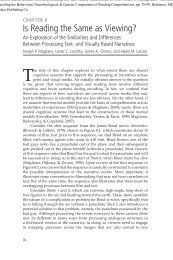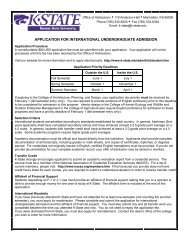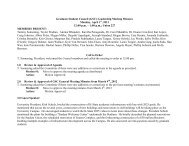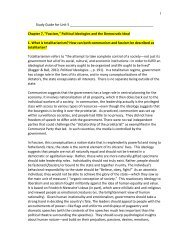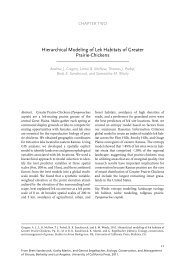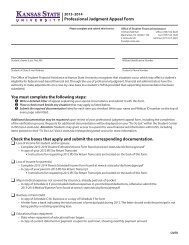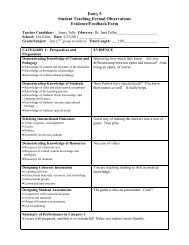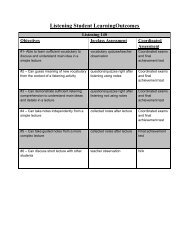DEFINITY Communications System Generic 2 and System 85
DEFINITY Communications System Generic 2 and System 85
DEFINITY Communications System Generic 2 and System 85
Create successful ePaper yourself
Turn your PDF publications into a flip-book with our unique Google optimized e-Paper software.
Tones <strong>and</strong> Their Meaning<br />
Ringing tones are produced by an incoming call. Feedback tones are those which<br />
you hear through the h<strong>and</strong>set (receiver) or the speaker.<br />
Ringing Tones<br />
• 1 ring — A call from another extension.<br />
• 2 rings — A call from outside or from the attendant.<br />
• 3 rings — A priority call from another extension, or from an Automatic Callback<br />
call you placed.<br />
• ring-ping (half ring) — A call redirected from your voice terminal to another<br />
because Send All Calls or Call Forwarding All Calls is active.<br />
Feedback Tones<br />
• busy tone — A low-pitched tone repeated 60 times a minute; indicates the<br />
number dialed is in use.<br />
• call waiting — One, two, or three beeps of high-pitched tone, not repeated;<br />
indicates an incoming call is waiting to be answered. Number of beeps designates<br />
the source: one for an internal call, two for an outside or attendant call, three for a<br />
priority call.<br />
• call waiting ringback tone — A ringback tone with a lower-pitched signal at<br />
the end; indicates the extension called is busy, <strong>and</strong> the called party has been given<br />
a call waiting tone.<br />
• confirmation tone — Three short bursts of tone; indicates a feature activation<br />
or cancellation has been accepted. When you have finished selecting a ringing<br />
pattern for your voice terminal, you hear two rising tones.<br />
• coverage tone — One short burst of tone; indicates your call will be sent to<br />
another extension to be answered by a covering user.<br />
• dial tone — A continuous tone; indicates dialing can begin.<br />
• intercept/time-out tone — An alternating high <strong>and</strong> low tone; indicates a dialing<br />
error, a denial of the service requested, or a failure to dial within a preset interval<br />
(usually 10 seconds) after lifting the h<strong>and</strong>set or dialing the previous digit.<br />
• local error tone — A steady low tone; indicates an incorrect button press.<br />
• recall dial tone — Three short bursts of tone followed by a steady dial tone;<br />
indicates the feature request has been accepted <strong>and</strong> dialing can begin.<br />
• recorder tone — A fast busy tone repeated 120 times a minute; indicates all<br />
trunks are busy.<br />
• ringback tone — A low-pitched tone repeated 15 times a minute; indicates the<br />
number dialed is being rung.<br />
• speakerphone reset tones — A rising set of tones; indicates the speakerphone<br />
is adjusting itself to the surrounding room acoustics. Note: Only 8434DX voice<br />
terminals with the Reset Speakerphone feature will play these tones.<br />
43



